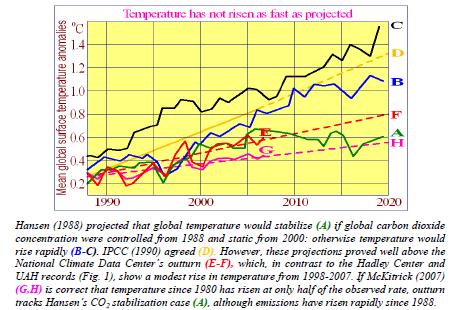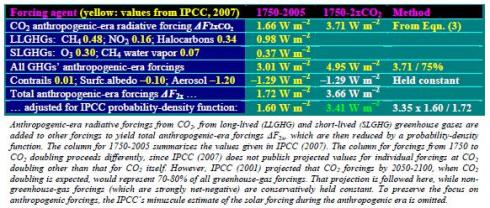Planet Earth has been Cooling for 2000 years
July 13, 2012
By LUIS MIRANDA | THE REAL AGENDA | JULY 13, 2012
A study published on July 9 by Professor Dr Jan Esper of Johannes Gutenberg University in Mainz concludes that Earth, despite climate alarmism, has been cooling at least since 138BC, the time at which professor Esper began analyzing fossilized tree rings, which are considered one of the most accurate indicators of climate change.
The study also reinforces the theory that the Earth enjoys a climate that is always changing, that those changes occur over long periods of time — 2000 years – and that for any study to be taken seriously, it must contain data collected that represents such long periods. Smaller studies only measure the changes in climate that occurred during decades, or centuries, which in the realm of climate change are proven insignificant because they do not represent complete climate change trends.
The study conducted by a group of scientists led by Dr. Esper also explains other events such as how the Romans were able to plant grapes in northern England for a long time while the climate was warmer and how people later managed to walk on a frozen Thames river in London after the climate changed and became much colder.
“Our results suggest that the large-scale climate reconstruction shown by the Intergovernmental Panel on Climate Change (IPCC) likely underestimate this long-term cooling trend over the past few millennia,” says Professor Esper. The study sponsored by the Institute of Geography at JGU was published on the Journal Nature on July 8, and it was posted on the university’s website a day later. “Calculations prepared by Mainz scientists will also influence the way current climate change is perceived,” says the article on JGU’s page.
Over millennia, the Earth has gone through periods of climate change that have been labeled according to their peak events. For example, a global warming period occurred in times, under what is known as the Medieval Warm Period (MWP), Medieval Climate Optimum, or Medieval Climatic Anomaly. This period lasted from approximately 950 AD to 1250 AD. Later on, a cooler period followed mainly in the Northern Atlantic. This period was known as the Little Ice Age. The Little Ice Age was seen as a climate anomaly because of the impact it had on the region. That impact went beyond temperature swings.
What Professor Esper and his team of scientists from Germany, Finland, Scotland, and Switzerland did was to examine tree-ring density profiles in samples from Finnish Lapland. The remains of the trees were well preserved under very cold temperatures and due to the fact they had been at the bottom of numerous lakes, where they rested for thousands of years. The scientists used density measurements of the sub-fossil pine trees to create a sequence of climate change that went back to 138 BC. The measurements of the tree rings correlate very closely with temperatures in the region that is located on the Nordic taiga.
After obtaining the measurements, researchers reconstructed temperature records with great quality and fidelity, from which they produced a high-resolution presentation of temperature patterns throughout the last two millennia, including the Roman, Medieval and Migration periods, to arrive to the aforementioned Little Ice Age. The study performed by Dr. Esper also reveals a new phenomenon, that the study says, was not expected in this form. Researchers were able to use the data derived from tree-rings to precisely calculate a much longer-term cooling trend that has been playing out over the past 2,000 years.
“The findings of the study prove that such trend involves a cooling of -0.3°C per millennium due to gradual changes to the position of the sun and an increase in the distance between the Earth and the sun.” This fact reinforces the theory as well as previous studies and explanations from recognized climate scientists — such as Piers Corbyn — that solar activity and the movement of the Earth around the sun is much more of a driver of climate change and global warming than anthropogenic activity, as the IPCC, the University of East Anglia, Al Gore and James Hansen would have us believe.
“This figure we calculated may not seem particularly significant,” says Professor Esper. He adds that is also not negligible when compared to global warming, which up to now has been less than 1°C. According to the data obtained by the study, solar insolation changes that result from long-term oscillations of orbital configurations are a very important driver of Holocene climate. The influence of solar activity has been driving climate for the past 2,000 years, and its influence has been up to four times as strong as the 1.6 W m−2 net anthropogenic forcing since 1750.
“Here, we present new evidence based on maximum latewood density data from northern Scandinavia, indicating that this cooling trend was stronger (−0.31 °C per 1,000 years, ±0.03 °C) than previously reported, and demonstrate that this signature is missing in published tree-ring proxy records. The long-term trend now revealed in maximum latewood density data is in line with coupled general circulation models indicating albedo-driven feedback mechanisms and substantial summer cooling over the past two millennia in northern boreal and Arctic latitudes. These findings, together with the missing orbital signature in published dendrochronological records, suggest that large-scale near-surface air-temperature reconstructions relying on tree-ring data may underestimate pre-instrumental temperatures including warmth during Medieval and Roman times.”
Dr. Esper and his colleagues believe that over the last 2 millennia, Earths orbital forcing continually reduced summer insolation in the Northern Hemisphere. Most of the changes experienced on the planet due to such orbital changes, they say, were mostly felt at latitudes of ~65° N in the Northern Hemisphere, between June–August (JJA). Those same forces have been found to drive climate variability over the past million years. Interestingly, Johannes Gutenberg University Mainz’s study also incorporates the influence of long-term CO2 emissions in the results, and determined that orbital forcings together with climate variability resulting from biogeochemical feedbacks from the marine and terrestrial ecosystems, is what initiated the cooling cycles between glacial and interglacial periods.
The unreliability of shorter-term tree ring measurements due to their limited capacity to evaluate low-frequency temperature fluctuations was dealt with by developing a 2,000-year summer temperature reconstruction based on 587 high-precision maximum latewood density (MXD) series from northern Scandinavia. This reconstruction was based on a three-year analysis of living and subfossil pine (Pinus sylvestris) trees from 14 lakes and 3 lakeshore sites at latitudes of or near 65° N. The methodology permitted the scientists to obtain much better replicated than any existing MXD time series.
“We carried out a number of tests to the MXD network and noted the robustness of the long-term trends, but also the importance of including living trees from the lakeshore to form a seamless transition to the subfossil material preserved in the lakes. Calibration/verification with instrumental data is temporally robust and no evidence for divergence was noted,” says the study. Once the data was accepted as part of the study, the last reconstruction (N-scan) was calibrated against regional JJA temperature (r1876–2006 = 0.77) and spans the 138 BC–AD 2006 period.
This latest study from Johannes Gutenberg University Mainz is strong proof that all attempts to use climate change, global warming or human activity as escapegoats for governments and international organizations such as the United Nations to take over the resources of the planet and limit development are all about the advancement of a corporate controlled agenda that dies a little bit more every day.
Perhaps New York Mayor Michael Bloomberg should be sent this study and its results so he stops thinking about caging people in japanese-style apartments that look more like prisons than homes. The study should also be a wake-up call for James Hansen, Al Gore, Ted Turner and Bill Gates that the people understand that their dream to take civilization back to pre-industrial ages’ living standards is not going to happen. It will certainly be an arrow through the heart of the United Nations Agenda 21 policies that are now being implemented all over the planet because, the UN says, ‘we must save the planet’ from anthropogenic global warming.
Can they all argue with such a conclusive 2000 year old climate record study? They can try.



